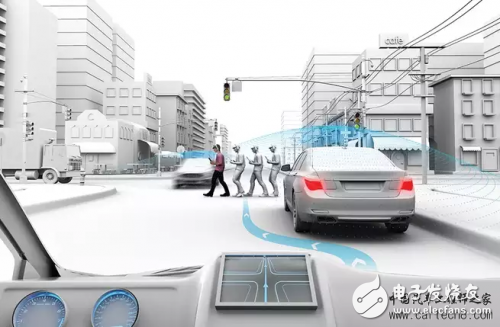Analysis of the matters needing attention in the turning of the self-driving vehicle
Changing lanes is simple for human drivers. For autonomous vehicles, this is not the case. Automated cars do not use brain gray matter and muscle memory, but instead switch through programming, artificial intelligence, and in-vehicle sensing systems such as lasers, cameras, and radar. In this regard, we interviewed four companies in the auto-driving car when they were turning: startups Drive.ai, startups nuTonomy, Uber and Waymo.

Signals scattered throughout the environment provide important clues to the robot's brain. Using the deep learning artificial intelligence (AI) strategy, Drive.ai's car can infer that a car parked at a green light may be turned off, while a car that does not move at a red light is obeying traffic rules. The algorithm can also conclude that the flashing hazard light on the vehicle in front means that it may not reach other places in a short time.
Beyond the positionerCars and delivery trucks parked on the side of the road often appear suddenly in crowded city traffic. For autonomous vehicles, cars that occupy only a portion of the lane may stop for a short period of time. NuTonomy and Drive.ai's smart cars will consider this factor when deciding whether to pass the lane. If the car ahead is closer to the roadside than the middle of the lane, the robotic car will choose to bypass.
Understand the road conditionsNuTonomy's self-driving cars have been cruising in Singapore and Boston to gain insight into the road conditions in the local city. For example, if a nuTonomy vehicle considers a stationary truck to be delivering a courier, then the vehicle is more likely to choose to go over. In case of doubt, the car will think that a stationary car will only stop temporarily and will wait behind. This is a typical conservative approach in the industry.
Street sharingIf someone accidentally breaks into the driveway, the self-driving car will slam on the brakes. Moreover, the Waymo car will provide the cyclist with a large berth by default. The car camera scans the streetscape around the vehicle, and the camera's rotating laser, a tool called lidar, measures the distance between the car and other objects. Radar readings help calculate the speed of other nearby vehicles.
Ready to start by routeNavigation is considered one of the best reasons for autonomous car racing. Uber's advanced technology team has programmed the car to check if there is enough distance between a car and other cars before the action. Essentially, the computer enforces a distance guide called the "two-second rule." This calculation also takes into account the driver's comfort: the car does not suddenly increase the throttle and rushes to the driver.
Front vehicleA tall car will block the view of humans and robotic sports cars, so if an autonomous car is behind a half-height car, it will stop unless it is intervened. However, if the car is parked on the side of the road or is on a flash, the autopilot driver may try to pass. Finally, engineers want vehicles to communicate with each other, so that a truck that is parked can share its status with nearby cars.
Shenzhen Zpal Technology Co.,Ltd , https://www.zpal-vape.com